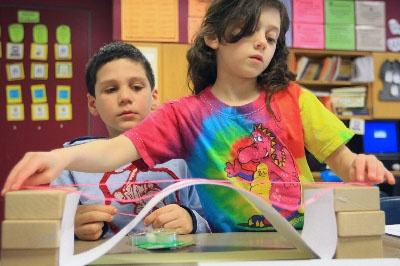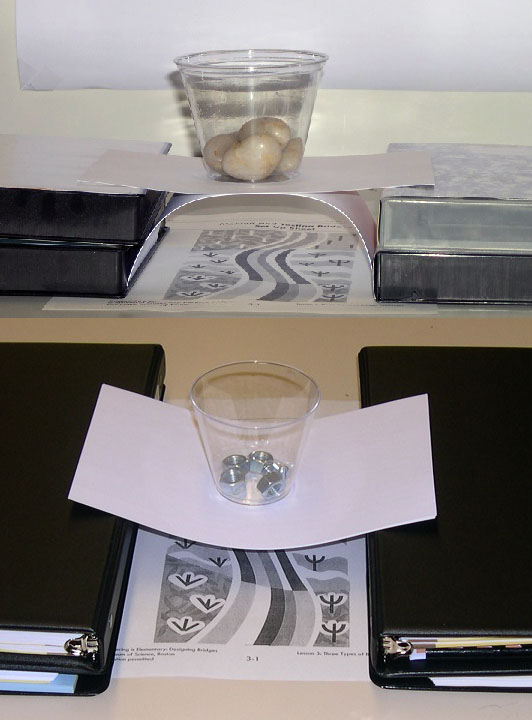 |
| New videos show what it looks like when young children engineer. |
Here in Boston, the Engineering is Elementary offices are buzzing with activity. As part of a new five-year initiative, we’re working to significantly expand our catalog of professional development resources. Currently in development: a variety of innovative, on-demand engineering videos.
Today, we’re pleased to release one new collection: EiE “Engineering Moments.” These short videos let you peek into elementary classrooms where students are engaged in hands-on engineering.
Engineering Moments are similar to our popular “Video Snippets” in how they capture key classroom moments. But we’ve enhanced their value to educators who are new to classroom engineering by adding narration and animations that set a context for the action that unfolds.
A Lens for Learning
 |
| EiE videographers capture a moment in a Massachusetts classroom. |
“When kids engineer, a whole lot can happen all at once!” says EiE director Christine Cunningham. “With ‘Engineering Moments,’ our aim is to give educators a lens through which to focus on one key takeaway from the scenario—for example, an effective pedagogical strategy that the teacher is using, or an engineering practice that the students are demonstrating.”
“To create both Snippets and Moments, we reviewed hundreds of hours of footage that we’ve collected in classrooms across the country,” says EiE videographer Ellen Daoust. “Our goal was to select moments that were highly engaging, accessible to the viewer, and presented prime examples of exemplary teaching of engineering in the elementary grades.”
Eavesdrop on Exemplary Educators
| When the data don’t make sense, what do you do? Click above to watch. Full-screen version here. |
You’ve probably heard that engineering activities help students develop 21st century skills such as collaboration and communication—but what does that really look like in an elementary classroom? Engineering Moments show you.
Several Moments in the collection delve into age-appropriate data analysis. One particularly notable example, titled “Comparing Results,” shows an awkward situation that every educator has likely faced at one time or another and lets you eavesdrop on one teacher’s masterful response.
 |
| You’d expect an arch bridge to support more weight than a beam bridge. |
Here’s the scenario: During a class share-out in
which each team of students reports the results of their engineering trials, one team provides a piece of data that is completely unexpected . . . and doesn’t make sense.
After testing three different kinds of model bridges to evaluate their load-bearing ability, the students report that their arch bridge was the weakest—even though arch bridges are generally known to support more weight than the two other bridge designs that were part of this exercise (beam and deep beam).
As a teacher, how would you respond in this situation? Reflect on the possibilities . . . and then watch the video at right to see how second-grade teacher Steve Lebel questions his students in order to untangle the mystery.
Tell Us What You Think
A total of 10 “Engineering Moments” are now available. You’ll see scenes from diverse schools and grades, each video is concise (less than two minutes long), and every video features closed captioning. Check them out . . . and let us know what you think!
Engineering is Elementary is a project of the National Center for Technological Literacy® at the Museum of Science, Boston.








